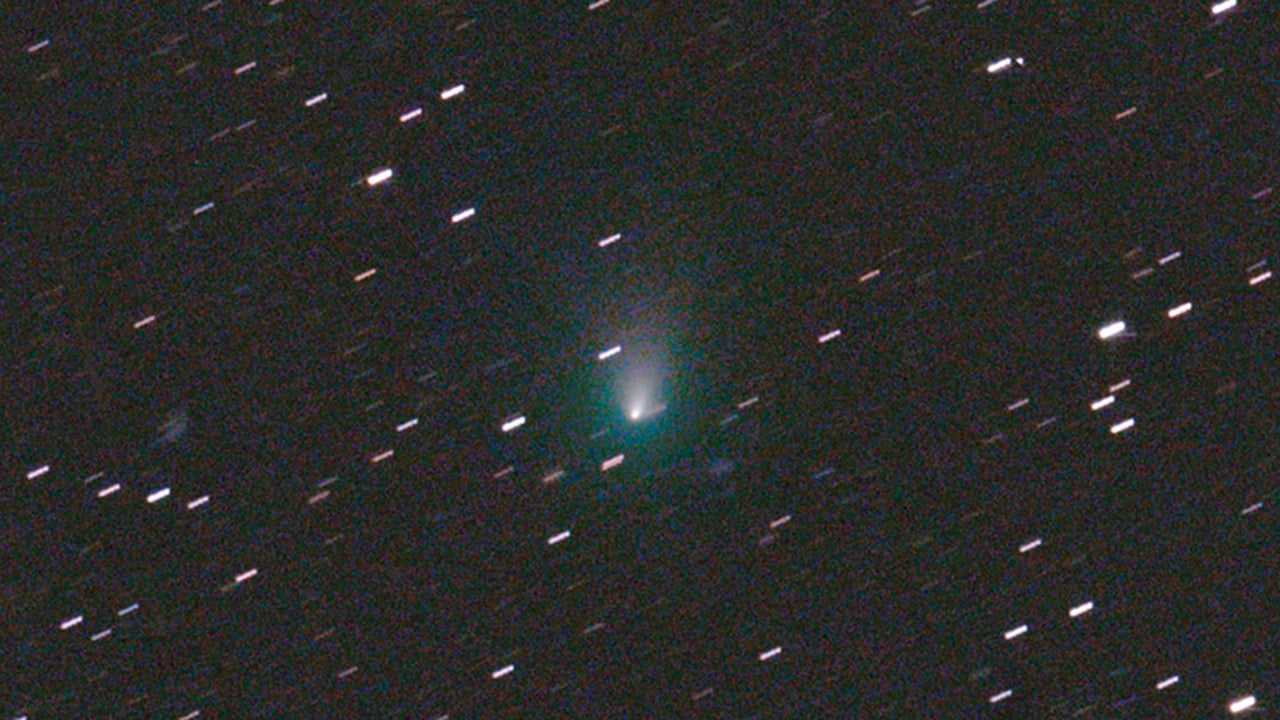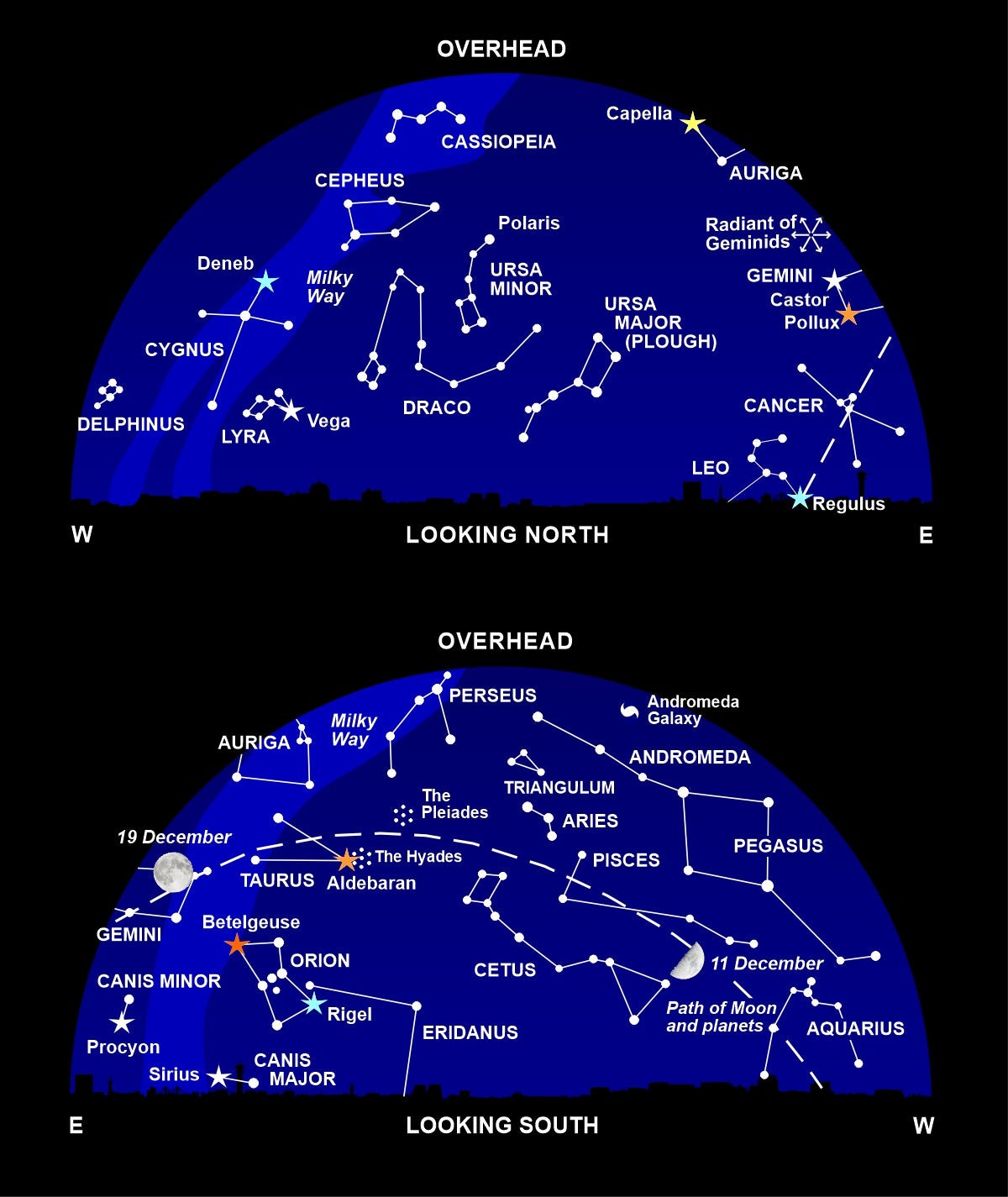Stargazing in December: The Christmas comet is coming!
What guided the three wise men to Bethlehem? You’ll be able to spot two possible contenders yourself this month, writes Nigel Henbest

What was the Star of Bethlehem, that guided the Wise Men to the birth of the baby Jesus over two millennia ago? As an astronomer, I’m always asked this question as Christmas approaches, and I must admit there’s no definite answer. But you can spot two possible contenders for yourself this month.
Look to the west after sunset, and behold with awe the Evening Star. It’s our neighbour planet Venus, robed in dazzling clouds that make it the most brilliant object in the night sky after the Moon. And Venus reaches its maximum brilliance on 7 December, when it outshines the brightest star, Sirius, 20 times over. Some historians think the biblical “Star” was actually a very close conjunction of Venus and second-brightest planet Jupiter (also on view this month) in 2 BC.
Another theory invokes a comet as the Christmas Star, and the most famous of these celestial visitors, Halley’s Comet, did swing around the Sun in 12 BC. This date was a bit too early for it to be a portent of the Messiah’s birth, but perhaps a later comet hung in the sky over Bethlehem at that critical time. And we currently have a comet on view.
This celestial visitor was discovered last January by American astronomer Greg Leonard at the Mount Lemmon Observatory in Arizona. Comet Leonard was then near Jupiter’s orbit, and during the year it has been barrelling into the inner Solar System, brightening all the time. The Sun’s heat has boiled away water and frozen gases from the comet’s small solid nucleus, wreathing it in a vast gaseous head and a long tail stretching away from the Sun.
During December, you can see the Comet Leonard in binoculars, and it should be just visible to the naked eye when it passes closest to the Earth on 12 December. But a comet is like a cat: its behaviour is unpredictable. The newcomer may stay relatively dim; or it may flare up as an unmistakeable glowing dagger in the sky.
To spot the comet in early December, you’ll need to be up at the crack of dawn. Look to the east before the sky begins to brighten; the bright star you’ll see there is Arcturus. On 5, 6 and 7 December, binoculars will show the comet to the left of this star. As the mornings progress, Comet Leonard drops vertically downwards, brightening as it sinks into the twilight glow.
After passing closest to the Earth – a safe 35 million kilometres away – Comet Leonard moves to the evening sky. It’s very low down in the dusk, and fading all the time. On 18 December, the comet passes just below Venus. Unlike many conjunctions in astronomy, that’s not just a nearby object happening to line up with a distant one. Comet Leonard flies past Venus at only 4 million kilometres – a hair’s breadth on the interplanetary scale – and a couple of days later Venus runs into the comet’s tail. Cometary debris will burn up in a spectacular meteor storm for any putative denizens that might be living in the planet’s clouds.
Comet Leonard swings closest to the Sun on 3 January, then heads back out to the icy outer wastes of the Solar System. It will be 80,000 years until anyone on Earth sees it again.
What’s up
A parade of planets is livening up the sky after sunset. You can’t miss the brilliant Evening Star – Venus – hanging low on the horizon, with giant Jupiter well to its upper left, and fainter Saturn lying in between.
The Moon cruises beneath these worlds early in the month. On 6 December, the thinnest crescent Moon lies below Venus, and on the next night it’s between Venus and Saturn. On 8 November, you’ll find the waxing Moon flanked by Saturn and Jupiter, and by 9 December the Moon is near Jupiter.

If you have a telescope or a good pair of binoculars, focus in on Venus and you’ll see its shape change to a narrow crescent as the planet approaches the Earth. During the last few days of the month, you may catch Mercury down in the twilight to the lower left of Venus, around 30 times fainter than the Evening Star.
Anyone who’s lucky enough to be in Antarctica on 4 December will be treated to a total eclipse of the Sun, though nothing is visible from the northern hemisphere.
But people in Europe and North America are in prime pole position to observe one of the year’s best displays of shooting stars, the Geminids, which peak on the night of 13 December. Set your alarm for the wee small hours, for the best views of the flaming visitors after the Moon has set. These meteors are fragments of asteroid Phaeton, burning up as they slam into the Earth’s atmosphere. They can appear in any part of the sky, though by perspective the meteors seem to stream outwards from a point in the constellation of Gemini (the Twins).
The chief stars of Gemini are Castor and Pollux, almost matched in brightness. Above them you’ll find the more brilliant Capella, in the constellation of Auriga (the Charioteer). To the right lie the other spectacular star-patterns of winter, including Orion (the Hunter), Taurus (the Bull) and Orion’s two hunting dogs, Canis Major and Canis Minor.
Diary
4 December, 7.43am: New Moon; total solar eclipse
6 December: Moon near Venus
7 December: Moon near Venus and Saturn
8 December: Moon near Saturn and Jupiter
9 December: Moon near Jupiter
11 December, 1.35am: First Quarter Moon
12 December: Comet Leonard closest to the Earth and at its brightest
13 December: Maximum of Geminid meteor shower
16 December: Moon near the Pleiades
17 December: Moon near Aldebaran
18 December: Comet Leonard closest to Venus
19 December, 4.35am: Full Moon
20 December: Moon near Castor and Pollux
21 December, 3.59pm winter solstice
23 December: Moon near Regulus
27 December, 2.23am: Last Quarter Moon
Philip’s 2022 Stargazing (Philip’s £6.99) by Nigel Henbest reveals everything that’s going on in the sky next year
Join our commenting forum
Join thought-provoking conversations, follow other Independent readers and see their replies
Comments
Bookmark popover
Removed from bookmarks